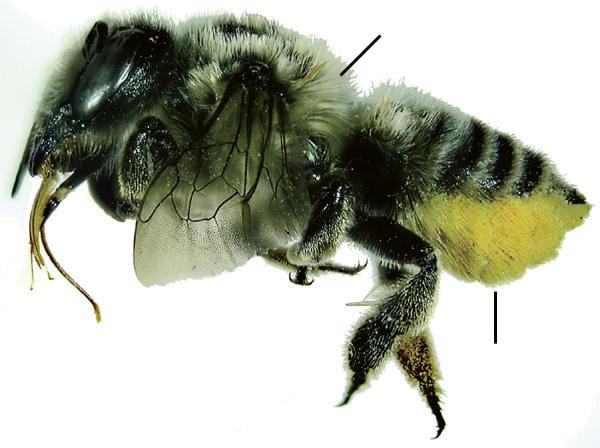Bees and their most closely related wasps are grouped together in the superfamily Apoidea within the order Hymenoptera. The wasps within the Apoidea are called the Spheciformes (they are commonly referred to as sphecid wasps). The Apiformes, or bees, are thought to have arisen from a sphecid ancestor in the Early Cretaceous period of the Mesozoic era, approximately 100 million years ago. We know this because many bees collect resin from trees and have gotten trapped and fossilized within the resulting amber, which can be accurately dated.
Within the Apiformes, there are seven families of bees, which can be broadly grouped into two categories based on whether the tongue is relatively short or long. The short-tongued bee families are the Colletidae, Andrenidae, Stenotritidae, Halictidae, and the Melittidae. The long-tongued bee families include the Megachilidae and the Apidae. The bee pollinators discussed in this book are Halictidae (alkali bees), Megachilidae (mason bees, leafcutter bees (Figure 3.5), and Apidae (bumble bees and honey bees)— one short-tongued and two long-tongued families.

Grouping organisms based on tongue length may seem ludicrous, but it is a critical distinguishing characteristic among bees. A bee’s tongue is an intricate apparatus, made up of segmented parts and palps that fold up neatly under the bee’s “chin” when not in use. Bees with long tongues have modified palps that, when extended, form a sheath around a central segmented structure called a glossa, resulting in a type of sucking straw to help draw in nectar from tubular flowers. The palps in short-tongued bees do not form a long sheath, and these bees prefer drinking nectar from shallow cup-shaped flowers. In general, the length of the tongue reflects the types of flowers the bees visit for food, kind of like having the right tool for the job.
Contrary to many organisms, the greatest diversity of bee species is found in arid and semiarid regions of the world, not in the tropics. In the US, the greatest number of bee species can be found in the deserts of the Southwest. They are also abundant in deserts of Chile and Argentina, more southern (temperate) parts of Australia, Southern Africa, Central Asia, and the Mediterranean. You do not need to travel to exotic locations, however, to find a vast number of bee species. Simply walk out to the backyard. Many people claim they haven’t seen bees on their flowers in years, but if we would stop buzzing about and sit still for 30 quiet minutes in the garden on a sunny day, bees will appear seemingly out of thin air. Bees are out there, particularly on native floral species. If we stand still, they will come to us.
